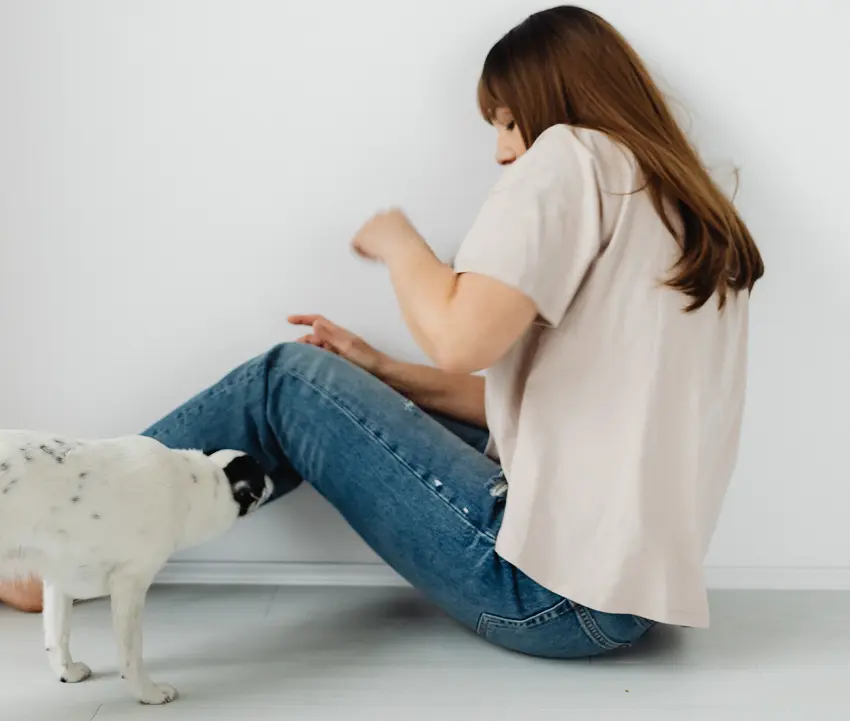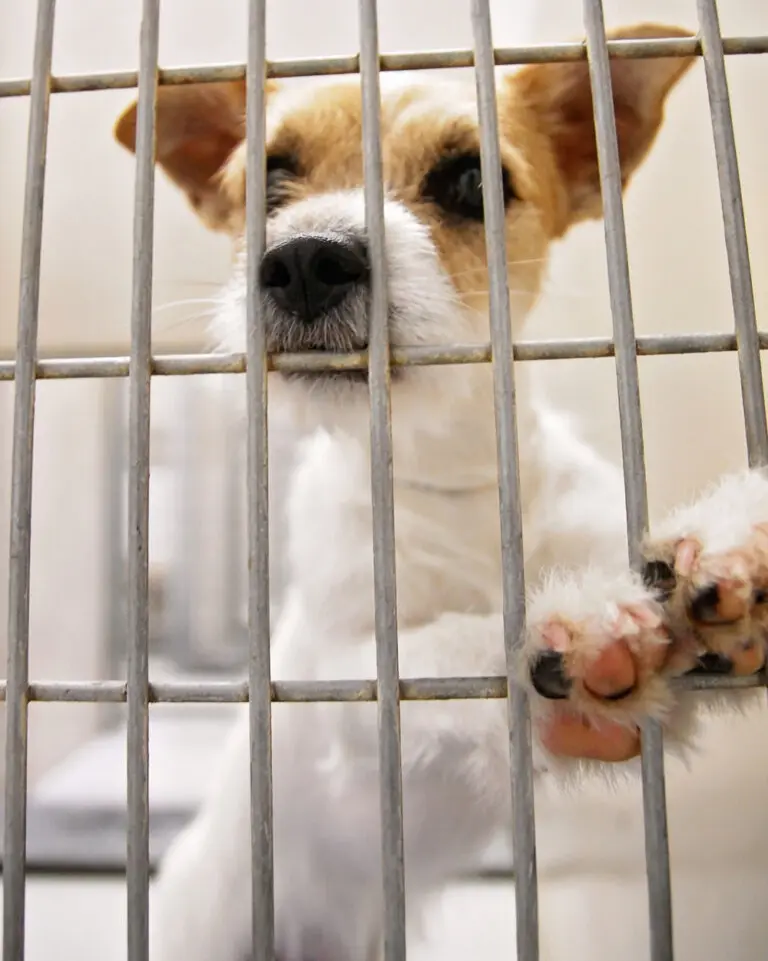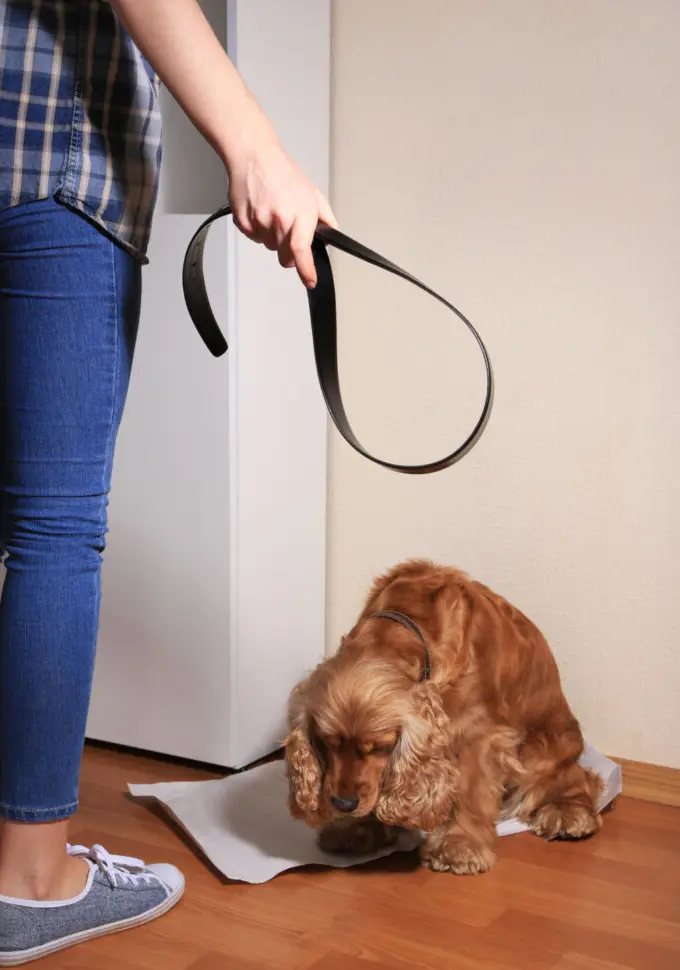What is “Dog Fright” and Liability for Yappy Injuries
Do you know what “dog fright” and liability for yappy injuries are? The former is a condition wherein a person fears dogs due to a certain reason. Simultaneously, the latter has something to do with the owner’s state of responsibility towards a person whose dog has been injured.
Indeed, fear is common to all human beings. The truth is, everybody, fears something. However, it’s different from talking about fright, especially “dog fright.”

This kind of fright can somehow lead the one who’s frightened to be put in a situation where he or she may get injured. Would you want that to happen?
If you are a dog owner, you may care to know essential truths about your rights and responsibilities regarding the outcome of your pet’s acts. And if you are one of the “dog frightened” persons, the proceeding words are for you.
In this article, we will slowly digest important truths about dog fright and liability for injuries caused by your dog. To deeper understand the topic, continue reading.
What You Need To Know About Dog Fright

Those who fear dogs may have possessed that feeling from birth, have contained it through someone, or maybe because of a trauma. The fear may vary for every person depending on their reason.
You cannot say that a person is weird if they fear a tiny bug just because you fear something great, something that can kill you, which you may refer to as lions – an animal with characteristics that are way beyond bugs.
Dog fright usually happens during a surprise encounter with a dog. “Dog fright responses” may come out differently as this depends on the condition of the person involved.
He got frightened because he was just surprised by the encounter with one person. On the other, he got frightened because of the same reason but may respond more intensely than the former because of phobia.
#1. What is cynophobia?
Cynophobia is the clinical term for fear of dogs. According to Ashley Marcin, this type of phobia affects seven to nine percent of the population; it was commonly included in the fifth edition of “Diagnostic and Statistical Manual of Mental Disorders.”
Statistics show that approximately 900 million dogs live worldwide, making the United States with maximum numbers. With this number, it is no surprise for one person to encounter a dog every single.
The fear that you feel towards a dog may be different to some degree compared to others. In reality, you can be frightened, but it does not mean you have a phobia. To further reiterate, fears are not entirely the same as phobias.
However, considering a person with a phobia, he may get severely injured because of the abnormal panic that person may feel upon contact with a dog. So, it is essential to know one’s condition before judging them as “overreacting.”
#2. Symptoms of cynophobia
Like any other medical condition, we can determine cynophobia by a set of symptoms. So if you are suspecting to be cynophobic, do not let yourself stick with that suspicion.
Physical symptoms
Before assuming that you are cynophobic, you can at least observe yourself first if the fear you have for dogs affects you in every way – to the point that your daily activities are disturbed.
The symptoms include:
- Difficulty in breathing
- Stomachache
- Flesh tremors
- Heart rate increasing rapidly
- Chest pain
- Sudden dizziness
- Extreme shouts
- Crying
Emotional symptoms
One of these symptoms includes the feeling of escaping away from the unbearable situation of seeing a dog. This feeling intensifies as the person gets closer and closer to where the dog is situated. It seems to that person that they are screaming for her life.

Another symptom is the feeling that your fear dominates you to the point that it drains you emotionally. It feels like you are hopeless to get out from the pangs of disturbance, and inside, you keep and keep on running, but you know it’s inescapable. It would seem to you that the enemy has won the bait.
If you are concerned, having realized that these symptoms are evident in you, the best thing to do is see a phobia specialist.
#3. Dog fright vs. cynophobia
The word phobia has originated from the Greek word “Phobos,” which means horror or irrational fear (Online Etymology Dictionary). On the other hand, as defined by Merriam-Webster, fear is an “unpleasant, often strong emotion caused by anticipation or awareness of danger.”
They may seem like referring to one thing, but the main difference is that phobias are horrifyingly “mutated” fear.
For example, you may be frightened as you look down through the window from the 40th floor of your company’s building. But you cannot easily conclude that you have a phobia of heights because you felt that way. Instead, you are expected to feel a bit uncomfortable sitting so far away from the safe ground.
You can say you have a phobia of heights if the fear that you have taunted you even by just looking at a plain picture of a man trying to impress the crowd as he tends to jump towards the waterfall pool. Also, if that fear keeps you trembling even just as you’re walking through the overpass.
This diagnosis is the same as what you feel if you pass by a dog. You need to know the modification.
The difference in the intensity of the feeling is what you will have to consider correctly using one of these terms. Nevertheless, what’s important than using terms correctly is to check which terms apply to you.
#4. The cure for cynophobia
Let me tell you a story published by a freelance writer named Anna Sublet about her fear of dogs. She elaborates on the events in her life that caused her tremendous fear of being born.
Like most situations, her fear developed when she was young. The cynophobia symptoms were evident, but she did not discover it until she had heard and studied that term.
Yes, she was never bitten by a dog. However, her repetitive encounter with a dog, battering and snarling in their backyard, led her to acquire such fear. Her supposed to be meditative lone walks along the suburban streets have turned to anxious biking.
Her story ended with the fact that even if she has already gotten matured, she is still characterized by that kind of fear. She is still haunted by the possibility that she might get bitten. However, the undefeatable power of love made it a happy ending story.
Though the fear is unquenchable, love made it possible for her to embrace something she has feared all her life.
Nevertheless, whether you have this clinical condition or not, you are not exempted from yappy injuries. To understand more about this possibility, we will look at one of the significant cases involving dog fright and liability for yappy injuries.
#5. Dog fright cases
There have been numerous instances wherein people get injured because of dogs without being bitten. We consider these cases “dog fright” rather than “dog bite.” Such cases are brought to the court to solve them legally.
Here’s a summary of the case of Machacado v. City of N.Y, 80 Misc. 2d 889, N.Y. Sup. Ct. 1975 to further understand dog fright and your liability for yappy injuries:
“While the complainant walks parallel to the defendant’s property, a German Shepherd dog suddenly appeared, hurling at the cyclone fence as it aggressively barks at the complainant.
However, the setting occurred in a place covered with snow due to a storm before the barking incident. So as the complainant moved away from what she believed to be a dangerous creature, she accidentally fell and has acquired injuries.”
It was concluded in the same case that the plaintiff had an actionable cause when she was frightened and fell, leading to injury.

Because of her rights and the dog owner’s liability, the motion to dismiss the negligence claim has been denied; the defendant knows that his dog has the propensity to “charge at and frighten strangers.”
The facts herein show negligence on the defendant’s part, making him liable for yappy injuries.
Either you may have this “severe” feeling, or you are just one of the typical humans that is fearful of dogs, or maybe you are one of the lovers, you are not excused from yappy injuries unless there are exemptions specified by law.
Every one of us, not just dog owners, has to be knowledgeable of the legal rights and responsibilities of the people involved in an unwanted yappy incident. Also, if you have this tendency of “dog fright,” you may care to know if you have the right to present during a court trial.
What You Need To Know About Liability For Yappy Injuries
The University of Oxford defines liability as “the state of being responsible for something, especially by law.”
However, laws vary from one nation or state to another. Some acts are considered legal in a specific nation or state, while it is called a crime to the other. Some crimes are punishable by death in one country but not in others.
This is also true for yappy injuries. Your state’s people may not consider injuries caused by dogs a severe case and can be easily solved without getting themselves in a court-level argument. A simple conversation and financial assurance to settle the case would do; an amicable settlement is sufficient.
If you’re a dog owner, you may consider yourself fortunate because you can be liable without the pressure of legal terms and conditions. However, if you’re the injured party, you would necessitate a set of laws protecting your rights.
At this point, we will look and compare animal attack liability – specifically dog attack – in some selected areas in the United States.
#1. Dog bite liability in California
In California, there is this strict implementation of liability to dog bites. In the state’s statute, the owner of a dog is liable for their pet’s destructive acts, causing severe damage to another, given that a dog bite initiates it.
However, this liability is adequate if the incident happened in a public area or the injured is lawfully present in a private dwelling.
There are some exceptions to this liability, however. For instance, dog bites due to military works, where criminals are usually victims, don’t make the owner liable. However, it is worth noting that the owner can still be liable to the injured if that person has nothing to do with the investigated scheme.
Also, if a “dog bite does not cause injuries,” the decree mentioned above would not be effective. This is because the negligence rule of the state legally covers injuries such as scratches or wounds.
#2. Dog injury laws in Massachusetts
California’s dog bite law is quite different compared to the dog bite statute of Massachusetts, where injuries caused by dogs, even if not caused by biting, can be made the dog’s owner liable for the victim’s injuries.
It is much stricter than California’s in such a way that the Massachusetts dog bite statute may make the parent of a minor dog owner liable to any damage – either person or property – caused by the minor’s dog.
Liability to such damages may not be adequate if the victim’s teasing or abuse has brought up the dog’s unwanted action. It’s also not applicable if the victim has trespassed to the owner’s property where the dog-biting incident happened.
#3. New York dog bite laws
Injuries associated with dogs are a product of common law or judge-made law. This is different than statutory law or legislatively-made law. In New York, they use strict liability and negligence for dog bites as a rule for dog-related injuries. Please read here snow sled dog bites liability.
What’s prominent in this state’s laws is that the dog owner that caused damage to a particular person should be “strictly liable” for the victim’s medical bills in certain instances.
The state follows the “one bite rule” and applies “strict liability” where an owner’s knowledge of a dog’s vicious propensities is established. This has led New York’s highest court to call the “one bite” rule in New York a “misnomer,” even though New York is still called a one-bite jurisdiction, often actually a modified one-bite state.
Under this type of law, where an owner knew or should have known that their dog had vicious propensities or a predisposition to cause harm, that owner would be liable for a victim’s medical bills and injuries. This means an owner could be liable even if their dog has not bitten someone before. It also means an owner who has a dog that has bitten someone could automatically be liable if it happens again.
#4. Who is liable?
Accidents happen – it’s inevitable. We live in a world where we get involved in situations every day – without our knowing – that may harm us. But, then, if we as human beings, having conscious minds, may hurt our fellows, how much more can an instinct-driven creature do such?
If so, can they be fully responsible for what they have done? Can they be put to prison because of their violent deeds? Have you ever seen a dog’s legs bound in chains? That would be absurd.
Are you catching the idea? Yes, it is you who will be liable for whatever your pet dog has done towards someone or somebody’s property. You will be the one to pay for all the casualties. You will be the one to talk to the person or group affected to settle accounts.
You need to know your liability as a dog owner in your particular state. But your liability can become more faithful to you if you first hold on to the fact that you “owned” that dog.
#5. The human relationship with dogs
Considering that “dog is a man’s best friend,” we can observe that most households – if not all – have petted dogs. Human hearts are entangled with these sweet and affectionate creatures.
Dogs are not just pets or some animals that will guard their owner’s safety; they are part of the family. Information gathered by Pet Secure tells us that 36 percent of American dog owners celebrate their dogs’ birthday, giving them presents. Please read my article do guard dog bites.
These staggering facts lead us to understand that dogs are part of the factors that significantly affect society. Owning such a pet alleviates the loneliness of one’s heart, turning that sorrow into peculiar joy.
However, that’s not the case for all. The Humane Society of the United States said that there is a vast outgoing abuse of dogs and cats; it’s the truth that may crush your heart.
#6. Dog abuse
In his blog published last December 14, 2020, Aleksandar Hrubenja presented significant numbers regarding animal abuses. It is disturbing to know that 13 out of 20 abused animals are dogs. Approximately 10 thousand bulldogs die because they are used in gambling yearly (Gaille, 2017).
As we consider our liability as human owners, we must also prioritize our pet’s betterment.

We are stewards of God’s creation. On top of His creation, human beings must motivate us to do our best in perfecting our assignments. If laws protect human welfare, there are also laws created to defend our dogs.
Again, dog laws vary around the world. But the important thing is, there is. It is also important for a dog owner to know his responsibilities as a “protector.” Doing so will make the owner embrace – not just accept – their liability towards any act of his pet.
#7. Legal responsibilities of owning a dog
Pet parents are not just liable for the damage caused by their pets, but most importantly, they are responsible for the nourishment and sustenance of their petted ones.
We can see healthy and sometimes more luxurious dogs on social media but are we seeing the bigger picture? What is the reason that made you decide to pet a dog?
Most of us want to give love and care as it overflows from within our being. Some people are intensively lonely, thinking that a dog’s company may ease that feeling. Others want to lighten up their home by welcoming an enthusiastic and adorable creature.
Regular check-ups
To consider yourself a good and trusted pet owner, you must ensure that your pet attends its scheduled check-ups; this includes your pet’s vaccination (against pathogens and for anti-rabies), dental health, and the like. Please read here what happens if a dog gets vaccinated twice.
This step may make you get a lot of bills out of your pocket. But it does not matter for the one who truly cares. Before you have decided to pet a dog, you must have already known your responsibilities regarding your dog’s health.
Proper feeding
Another clear and primary manifestation of a good pet owner is feeding your pet rightfully.
Just a fun fact:
Among the nations that belong to those with the highest numbers of owned dogs, Norwegians spend 692 dollars per year to feed their dogs.

Your dogs will somehow appreciate you spending money through the material things you give them. However, it is null if your giving is not rooted in love.
Loving your pet
Compared to all responsibilities, loving them is primitive. This may seem not to be a responsibility but a genuine commitment decision. You can achieve this by giving them enough time and attention. Cuddle with your cute ones. Do things that will make them feel special. Please read here why won’t my dog cuddle with me anymore.
If you love your pet, you will do anything for them just to make them feel they’re loved, even if it costs you so much.
Conclusion
At the end of this article, may your question “What is dog fright and yappy injuries” have been answered. Indeed, there is a lot to know about this topic, and it is somewhat essential to study them, especially if you own a yapping one.
Never neglect such important truths because accidents happen every day, and you do not know when you’ll be involved in an undesirable situation. There is no life that is not precious, so we must be cautious about handling our responsibilities both as a neighbor and stewards.
It is an honor for me that you have reached this point in the article. Your time and effort are much appreciated!
